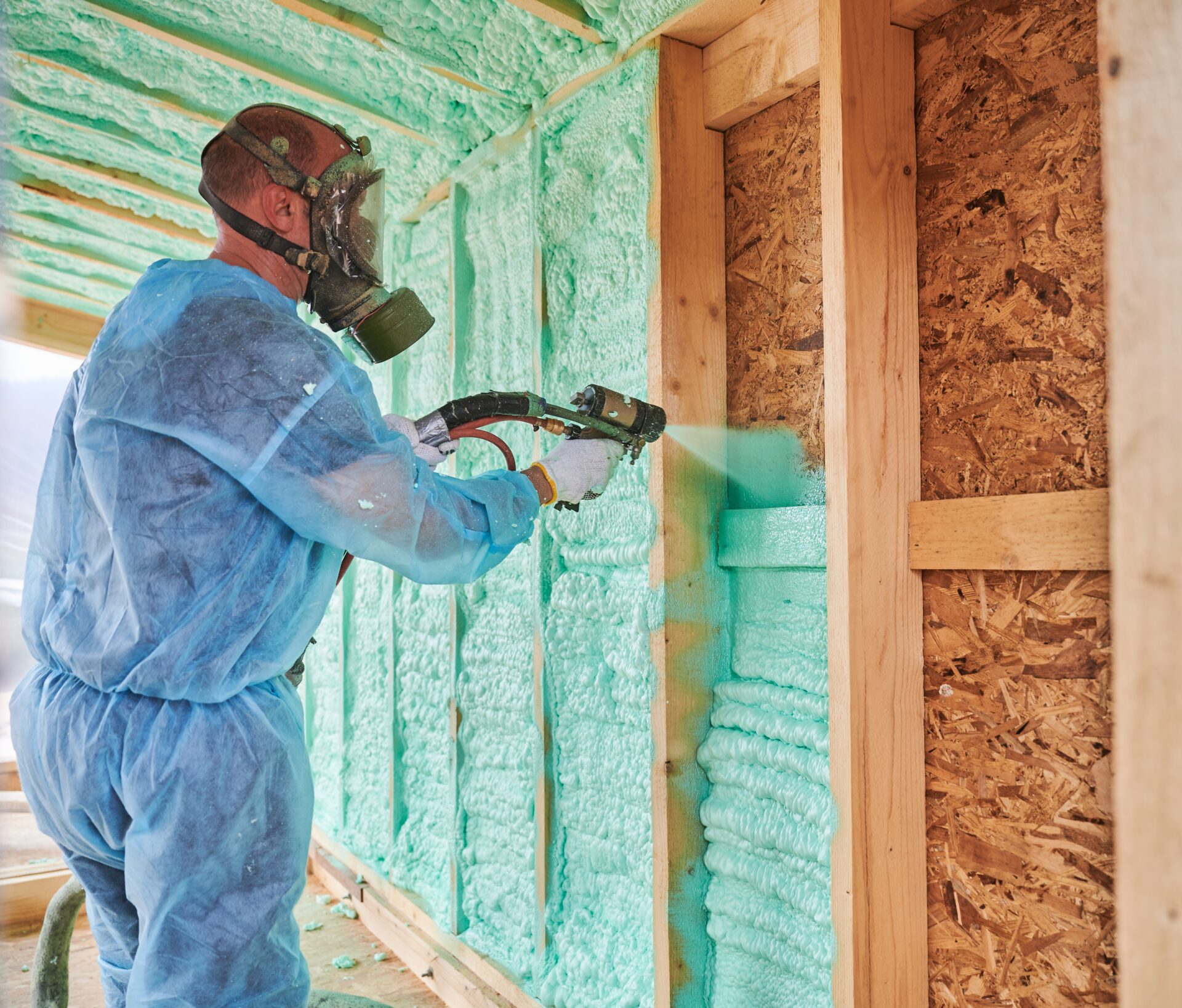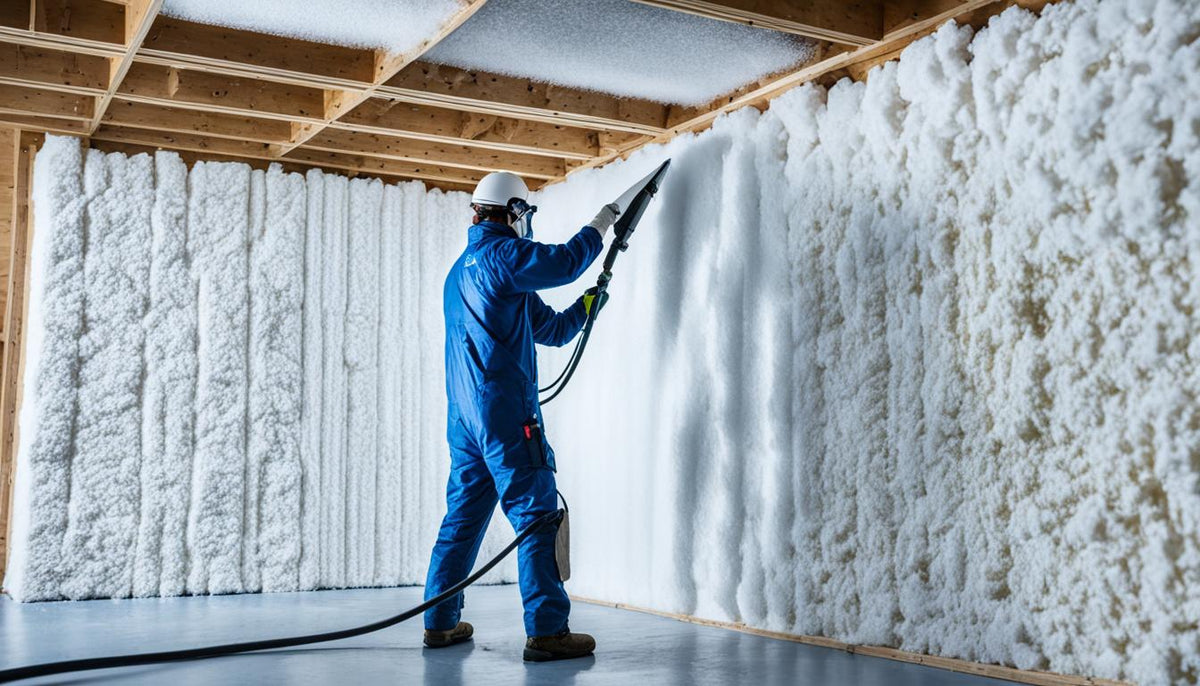Recognizing the Benefits of Using Spray Foam for Insulation Projects
Spray Foam: The Ultimate Option for Air Sealing and Insulation
Spray foam insulation has actually emerged as a leading solution for effective air sealing and thermal insulation, offering an unique combination of residential properties that establish it apart from conventional approaches. Comprehending the complete scope of its benefits, setup processes, and contrasts with other insulation kinds is critical for making educated decisions.
What Is Spray Foam?
Spray foam is a versatile insulation material that incorporates the principles of air securing and thermal resistance to enhance energy efficiency in buildings. Composed primarily of polyurethane or other similar substances, spray foam is used as a fluid that expands upon call with surfaces, producing a solid, continuous layer of insulation. This one-of-a-kind residential or commercial property permits it to fill up gaps, splits, and gaps that conventional insulation products might neglect, offering an exceptional air seal.
There are 2 primary kinds of spray foam: open-cell and closed-cell. Open-cell spray foam is lighter and much more versatile, using excellent audio absorption and a reduced R-value per inch - Spray Foam. In contrast, closed-cell spray foam is denser, offering a higher R-value, moisture resistance, and added architectural integrity to constructing elements
The application process generally includes customized tools, guaranteeing a smooth application that adheres to numerous substrates, consisting of timber, concrete, and metal. This versatility makes spray foam appropriate for both brand-new buildings and retrofitting existing structures. Its ability to develop an impermeable obstacle dramatically contributes to decreasing power consumption and improving indoor air top quality, therefore making it a recommended option among home owners and building contractors alike.
Benefits of Spray Foam Insulation
Among the most considerable benefits of spray foam insulation is its phenomenal capability to develop a continual air barrier, which successfully reduces power loss. Unlike traditional insulation materials, spray foam expands to load gaps and splits, making sure that air leakage is dramatically minimized. This particular not only enhances power effectiveness but additionally results in decrease utility expenses in time.
Furthermore, spray foam insulation provides premium thermal resistance, contributing to a much more stable interior setting. Its high R-value per inch enables reliable insulation in restricted areas, making it ideal for attic rooms, wall surfaces, and crawl spaces. The moisture-resistant residential properties of spray foam assistance stop mold and mildew growth, advertising much healthier living problems.
Another essential advantage of spray foam insulation is its sound-dampening top qualities (Spray Foam). It properly decreases sound transmission between areas, creating a quieter and much more comfy home setting. The sturdiness of spray foam likewise sticks out, as it does not droop or settle gradually, preserving its performance throughout its lifespan
Just How Spray Foam Functions
Recognizing how spray foam insulation works is crucial for appreciating its efficiency in air sealing and thermal resistance. Spray foam insulation includes 2 primary parts: isocyanate and polyol resin. When these elements are blended, they undergo a chemical reaction that creates the product to expand swiftly, creating a dense foam that loads splits, voids, and dental caries.
As the foam increases, it sticks to surfaces, developing an airtight seal that substantially lowers air seepage. This characteristic makes spray foam insulation extremely effective at preventing drafts and dampness penetration, which can bring about energy loss and damages with time. Additionally, the closed-cell variation of spray foam offers superior thermal resistance due to its inflexible structure, efficiently lessening heat transfer.
The special homes of spray foam allow it to adapt uneven surfaces, making certain comprehensive coverage and a smooth barrier. Because of this, spray foam insulation not only enhances power efficiency however likewise adds to boosted interior air top quality by decreasing the build-up of allergens and toxins. Eventually, comprehending the auto mechanics behind spray foam underscores its role as a premium selection for insulation and air sealing in both industrial and residential applications.
Installation Process Summary

Prior to setup, see post the room must be properly cleansed and prepped, ensuring that surface areas are without dust, debris, and dampness. Due to the fact that impurities can compromise adhesion and overall efficiency, this step is important. Once the location is prepared, the application involves blending both elements of the spray foam, which expands upon contact and fills spaces effectively.
Trained professionals should conduct the installment, utilizing specific devices to guarantee consistent coverage and ideal thickness. Safety and security safety measures, including using protective equipment and making sure appropriate ventilation, are important during this procedure. After application, the foam typically cures quickly, forming a solid obstacle that improves power efficiency.
Comparing Spray Foam to Standard Insulation
When examining insulation options, spray foam insulation stands out in contrast to conventional materials such as fiberglass and cellulose. One of the main advantages of spray foam is its superior air securing abilities. Unlike fiberglass and cellulose, which can enable air seepage, spray foam expands upon application, loading voids and crevices to produce a closed seal. This results in improved energy performance, as less heated or cooled down air gets away the home, bring about lower energy bills.
In addition, spray foam provides a greater R-value per inch than typical insulation kinds, providing more reliable thermal resistance in a thinner profile. This characteristic is specifically helpful precede with minimal dental caries depth. Spray foam is immune to wetness and mold growth, which can be a significant problem with cellulose and fiberglass, specifically in moist atmospheres.
Nonetheless, spray foam insulation usually carries a greater upfront price than its typical equivalents. House owners should weigh this first investment versus lasting energy savings and efficiency benefits. Inevitably, while both insulation kinds serve their objective, spray foam becomes a more sophisticated option for modern insulation demands, specifically in regards to air sealing and thermal performance.

Conclusion
In recap, spray foam insulation stands for a very reliable service for attaining optimal air securing and thermal resistance. Its one-of-a-kind properties, consisting of blog moisture resistance and audio dampening, make it appropriate for numerous applications in both new building and constructions and retrofitting jobs (Spray Foam). Although the first expenses may be higher compared to typical insulation materials, the long-lasting benefits, such as considerable energy savings and enhanced indoor air quality, warrant the financial investment and highlight its value in modern-day structure methods.
Spray foam insulation has actually emerged as a leading solution for reliable air sealing and thermal insulation, providing an unique mix of homes that establish it apart from typical methods.Spray foam is a versatile insulation product that combines the concepts of air securing and thermal resistance to boost power effectiveness in structures.When assessing insulation alternatives, spray foam insulation stands out in comparison to traditional materials such as fiberglass and cellulose. Ultimately, while both insulation kinds offer their purpose, spray foam emerges as a more advanced remedy for contemporary insulation requirements, especially in terms of air sealing and thermal effectiveness.
In recap, spray foam insulation represents an view extremely effective option for achieving ideal air sealing and thermal resistance.